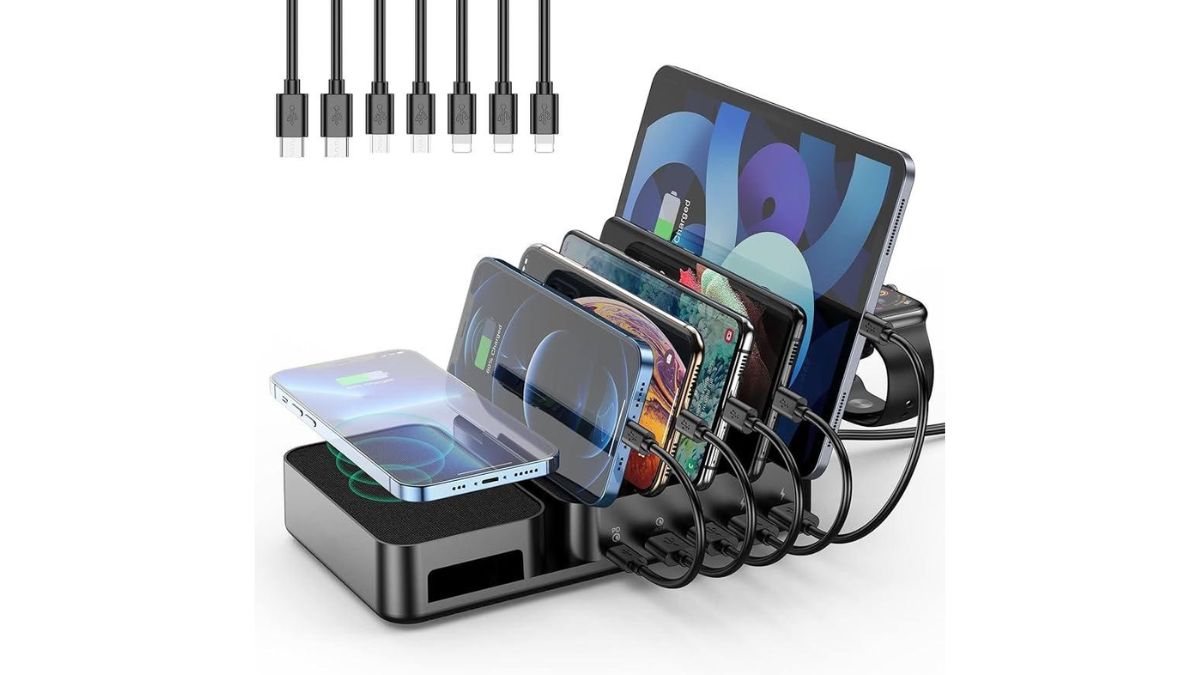What are the considerations for integrating VN88 Rezence wireless charging into outdoor environments?

Wireless charging has revolutionized the way we power our devices, offering a convenient and efficient solution that eliminates the need for messy cables. As technology advances, the demand for outdoor wireless charging solutions has grown, allowing users to charge their devices in public spaces such as parks, plazas, and shopping malls. One of the leading wireless charging systems designed for outdoor environments is the VN88 Rezence.
This article explores the key considerations for integrating the VN88 Rezence wireless charging system into outdoor environments, ensuring a seamless and reliable charging experience while addressing the unique challenges posed by external factors.
Power Source Considerations
The VN88 Rezence wireless charging system requires a reliable power source to operate effectively. This power source can be either alternating current (AC) or direct current (DC), and it must be capable of providing at least 12 watts of power.
Determining Power Requirements
Before installing the VN88 Rezence system, it is crucial to assess the power requirements of the installation site. This involves evaluating factors such as the number of charging stations, the expected usage, and the potential for future expansion.
By accurately determining the power requirements, you can ensure that the system is adequately powered and avoid potential issues such as insufficient charging or system failures.
Power Source Options
Depending on the installation location, there are several power source options to consider:
- Existing Electrical Infrastructure: If the installation site has access to an existing electrical infrastructure, such as power lines or an electrical panel, this can be the most straightforward solution. However, it is essential to ensure that the electrical system can handle the additional load and meets all safety regulations.
- Solar Power: For remote or off-grid locations, solar power can be an excellent option for powering the W88 Rezence system. Solar panels can be installed and connected to a battery bank, providing a sustainable and environmentally friendly power source. However, this solution requires careful planning and consideration of factors such as sunlight exposure and battery capacity.
- Generator: In situations where access to the electrical grid or solar power is limited, a generator can be used to provide the necessary power. While generators can be noisy and require regular maintenance, they offer a reliable and portable power source for temporary or remote installations.
Power Backup Solutions
To ensure uninterrupted charging and prevent data loss or system failures, it is recommended to incorporate power backup solutions into the W88 Rezence installation. These can include:
- Uninterruptible Power Supply (UPS): A UPS provides temporary battery power in the event of a power outage, allowing for graceful system shutdown or continued operation until the main power source is restored.
- Backup Generators: For critical installations or locations with frequent power outages, a backup generator can provide an alternative power source to keep the system running during extended power disruptions.
By considering these power source options and incorporating backup solutions, you can ensure that the VN88 Rezence wireless charging system remains operational and reliable in outdoor environments.
Location and Placement Considerations
One of the key factors in ensuring the successful integration of the VN88 Rezence wireless charging system into outdoor environments is selecting the appropriate location and placement.
Accessibility and Convenience
The wireless charging stations should be placed in areas that are easily accessible and convenient for users. This could include public spaces such as parks, plazas, shopping malls, or outdoor seating areas. Consider locations with high foot traffic and where people are likely to spend extended periods of time, such as outdoor cafes or recreational areas.
Signal Strength and Range
The VN88 Rezence system operates using magnetic resonance technology, which means that the charging efficiency and range are affected by the distance between the transmitter and receiver. It is essential to ensure that the charging stations are placed within the optimal range to provide reliable and efficient charging.
According to the VN88 Rezence specifications, the system has a charging range of up to 30 centimeters (11.8 inches) and can charge multiple devices simultaneously within this range.
Environmental Factors
Outdoor environments present unique challenges that must be considered when selecting the location and placement of the VN88 Rezence system. These factors include:
- Weather Conditions: The system must be able to withstand exposure to rain, snow, and extreme temperatures. Proper sheltering or enclosures may be necessary to protect the charging stations from the elements.
- Vandalism and Theft: In public spaces, there is a risk of vandalism or theft. Consider placing the charging stations in well-lit areas with ample surveillance or security measures.
- Interference: Nearby sources of electromagnetic interference, such as power lines or radio transmitters, can potentially disrupt the wireless charging signal. Conduct a site survey to identify and mitigate potential interference sources.
- Shade and Sunlight: In outdoor environments, the availability of shade or direct sunlight can impact the performance and lifespan of the charging stations. Consider providing shading or using materials that can withstand prolonged sun exposure.
By carefully evaluating these factors, you can select the most suitable locations and placements for the VN88 Rezence wireless charging system, ensuring optimal performance and user experience in outdoor environments.
Mounting and Installation Considerations
The VN88 Rezence wireless charging system is designed to be installed in a variety of outdoor environments, offering flexibility in mounting and installation options.
Mounting Surfaces
The charging stations can be mounted on various surfaces, including walls, poles, tables, or custom-built structures. The mounting surface should be sturdy, level, and able to support the weight of the charging station and any potential user interactions.
When mounting on existing surfaces, such as walls or poles, it is essential to follow proper installation procedures and use appropriate mounting hardware to ensure a secure and stable installation.
Mounting Methods
Several mounting methods can be employed for the VN88 Rezence system, depending on the installation environment and specific requirements:
- Surface Mounting: This method involves securely attaching the charging station directly to a flat surface, such as a wall or tabletop. Surface mounting can be achieved using screws, adhesives, or mounting brackets designed for outdoor use.
- Pole Mounting: For installations in public spaces or areas with limited surface area, pole mounting can be an effective solution. The charging stations can be mounted onto existing poles or custom-installed poles using specialized mounting hardware.
- Embedded Mounting: In some cases, the charging stations can be embedded into surfaces such as concrete or wooden structures. This method provides a seamless and integrated installation but requires careful planning and preparation during the construction phase.
Weatherproofing and Protection
Since the VN88 Rezence system is designed for outdoor use, it is essential to consider weatherproofing and protection measures during installation. These may include:
- Enclosures: Weatherproof enclosures or housings can be used to protect the charging stations from moisture, dust, and other environmental factors.
- Drainage: Proper drainage should be implemented to prevent water accumulation around the charging stations, which could lead to potential damage or corrosion.
- Sun Shading: In areas with intense sunlight, consider providing sun shading or using materials that can withstand prolonged sun exposure to prevent overheating or degradation of the charging stations.
By carefully considering mounting surfaces, methods, and weatherproofing measures, you can ensure a secure, stable, and reliable installation of the VN88 Rezence wireless charging system in outdoor environments.
User Experience and Accessibility
Integrating the VN88 Rezence wireless charging system into outdoor environments not only requires technical considerations but also a focus on user experience and accessibility.
Intuitive User Interface
The charging stations should feature a user-friendly interface that provides clear instructions and feedback to users. This can include visual indicators, such as LEDs or display screens, that show the charging status and any potential errors or warnings.
Additionally, consider incorporating accessibility features, such as tactile buttons or audio prompts, to accommodate users with visual or auditory impairments.
Ergonomic Design
The design of the charging stations should prioritize ergonomics and user comfort. This includes factors such as:
- Height and Positioning: The charging surface should be positioned at a comfortable height for users, taking into account different user heights and potential accessibility needs.
- Surface Angle: The charging surface should be angled or adjustable to minimize glare and provide a comfortable viewing angle for users while their devices are charging.
- Seating and Resting Areas: In public spaces, consider providing seating or resting areas near the charging stations to allow users to comfortably wait or use their devices while charging.
Multilingual Support
In outdoor environments with a diverse user base, it is beneficial to provide multilingual support for the user interface and instructions. This can improve accessibility and ensure that users from different linguistic backgrounds can easily understand and utilize the wireless charging system.
Integration with Smart City Initiatives
As cities become increasingly connected and digitally enabled, the VN88 Rezence wireless charging system can be integrated into broader smart city initiatives. This could include:
- Connectivity and IoT Integration:The VN88 Rezence system can be equipped with connectivity features that allow for remote monitoring, management, and data collection. By integrating the charging stations into IoT networks, cities can gather valuable insights on usage patterns, energy consumption, and user behavior.
- Smart Payment Systems: Implementing smart payment systems, such as mobile payment options or RFID technology, can streamline the charging process and enhance user convenience. This can also enable cities to implement dynamic pricing models or incentives to promote sustainable charging practices.
- Data Analytics and Optimization: Leveraging data analytics tools, cities can optimize the placement and operation of the charging stations based on usage trends and demand patterns. This data-driven approach can help maximize the efficiency and effectiveness of the wireless charging infrastructure.
By aligning the VN88 Rezence wireless charging system with smart city initiatives, municipalities can create more connected, sustainable, and user-centric outdoor environments that cater to the evolving needs of residents and visitors.
Maintenance and Support Services
Ensuring the long-term performance and reliability of the VN88 Rezence wireless charging system in outdoor environments requires proactive maintenance and responsive support services.
Preventive Maintenance
Regular preventive maintenance is essential to keep the charging stations operating optimally and extend their lifespan. Key maintenance tasks may include:
- Cleaning and Inspection: Regularly clean the charging surfaces and inspect for any signs of damage, wear, or corrosion. Address any issues promptly to prevent further damage or malfunctions.
- Software Updates: Stay up to date with firmware and software updates provided by the manufacturer to ensure compatibility, security, and performance improvements.
- Component Checks: Periodically check the components, connections, and cables of the charging stations to identify any loose fittings, frayed wires, or other potential issues.
- Battery Health Monitoring: If the charging stations are equipped with batteries for energy storage, monitor and maintain the health of the batteries to ensure optimal performance and longevity.
Responsive Support Services
In the event of technical issues, malfunctions, or user feedback, it is crucial to have responsive support services in place to address and resolve these issues promptly. This may include:
- Troubleshooting Assistance: Provide users with clear instructions for troubleshooting common issues or contacting support for assistance.
- On-Site Maintenance Teams: Deploy on-site maintenance teams or service technicians to quickly respond to technical issues or perform repairs on the charging stations.
- User Feedback Mechanisms: Establish channels for users to provide feedback, report issues, or suggest improvements to the wireless charging system. Use this feedback to continuously enhance the user experience and address any recurring issues.
By implementing a comprehensive maintenance plan and responsive support services, municipalities can ensure the continued functionality and satisfaction of users with the VN88 Rezence wireless charging system in outdoor environments.
Conclusion
As the demand for convenient and sustainable charging solutions continues to grow, the deployment of wireless charging systems in outdoor environments presents a promising opportunity to enhance user experience and promote eco-friendly practices. The VN88 Rezence wireless charging system offers a versatile and reliable solution for powering electronic devices in public spaces, parks, campuses, and urban settings.
By considering factors such as location selection, environmental conditions, mounting and installation considerations, user experience, smart city integration, and maintenance services, municipalities can successfully implement and operate the VN88 Rezence system to meet the evolving needs of residents and visitors.
With its innovative technology, seamless user experience, and potential for integration with smart city initiatives, the VN88 Rezence wireless charging system represents a significant step towards creating more connected, sustainable, and user-centric outdoor environments in the digital age. By embracing wireless charging technology and leveraging its benefits, cities can pave the way for a greener, more efficient, and tech-savvy future for all.





















